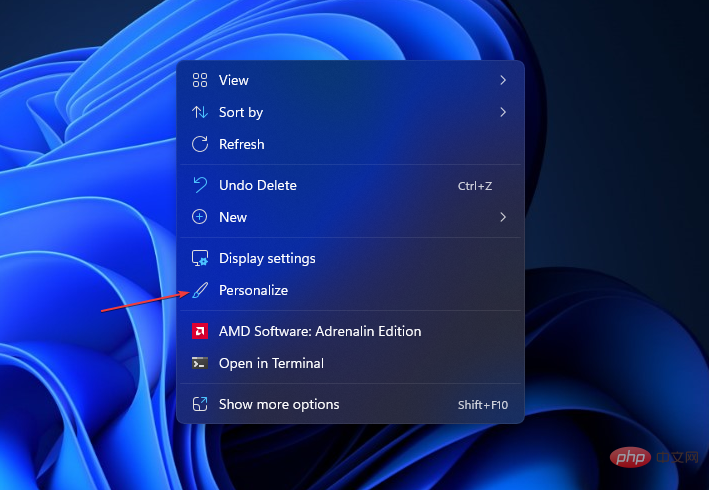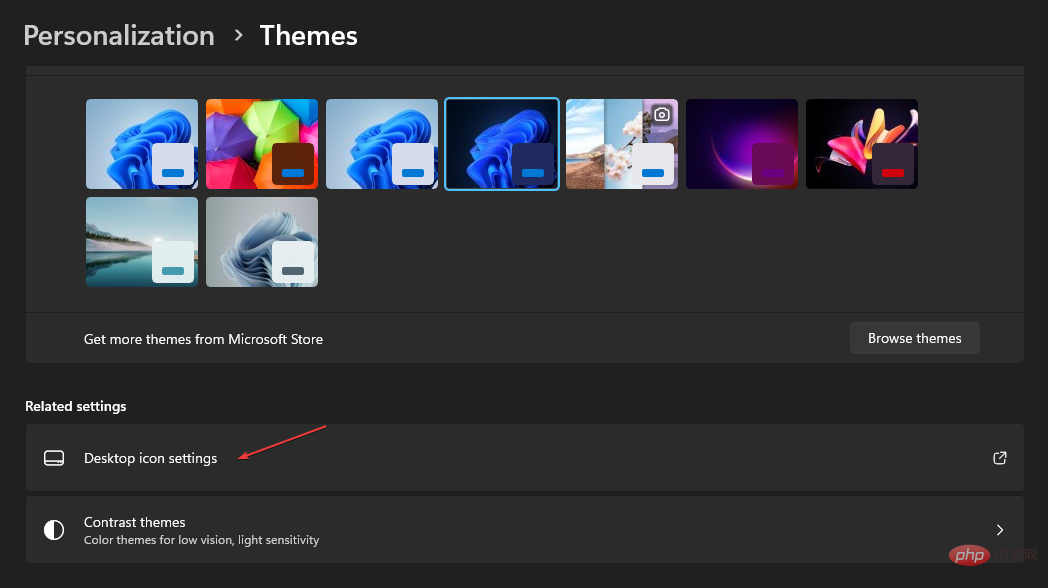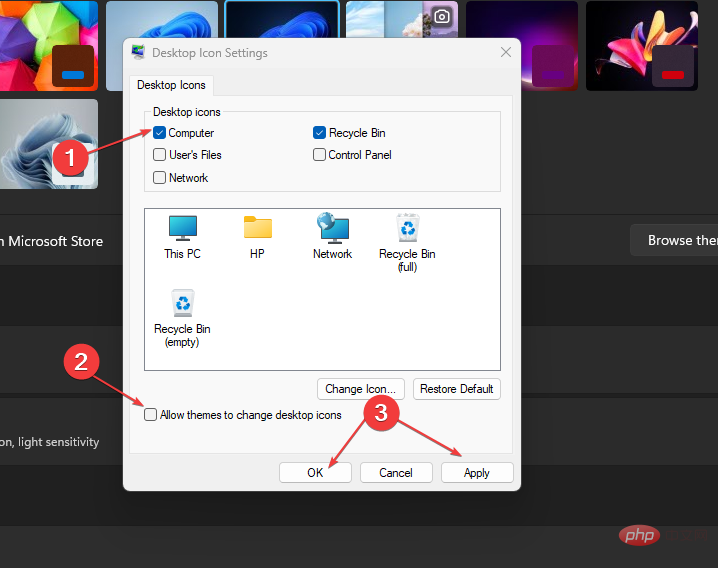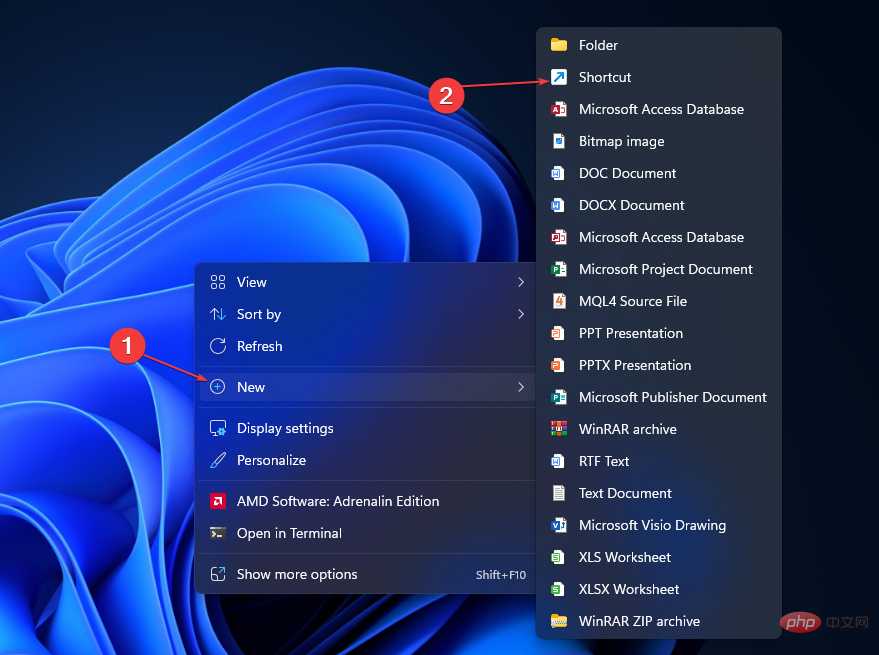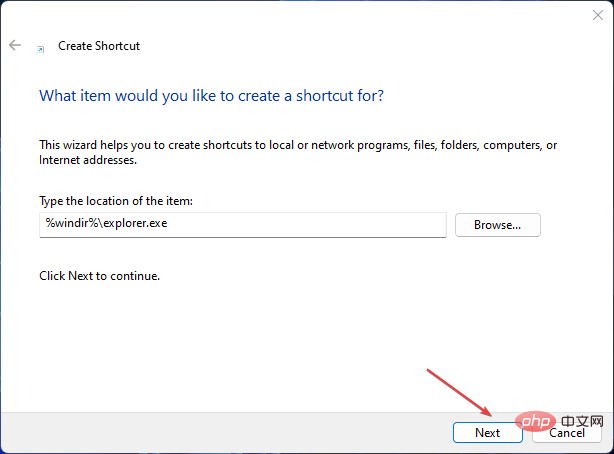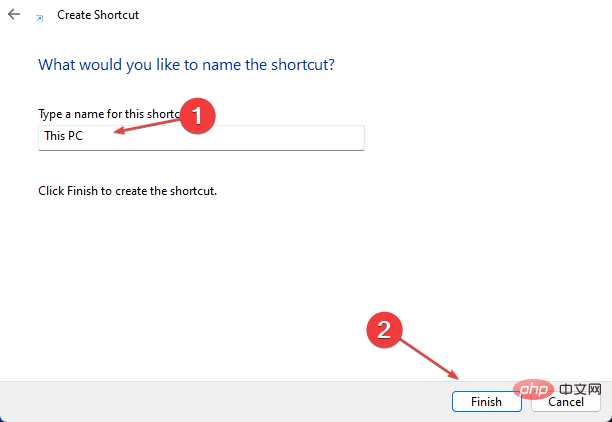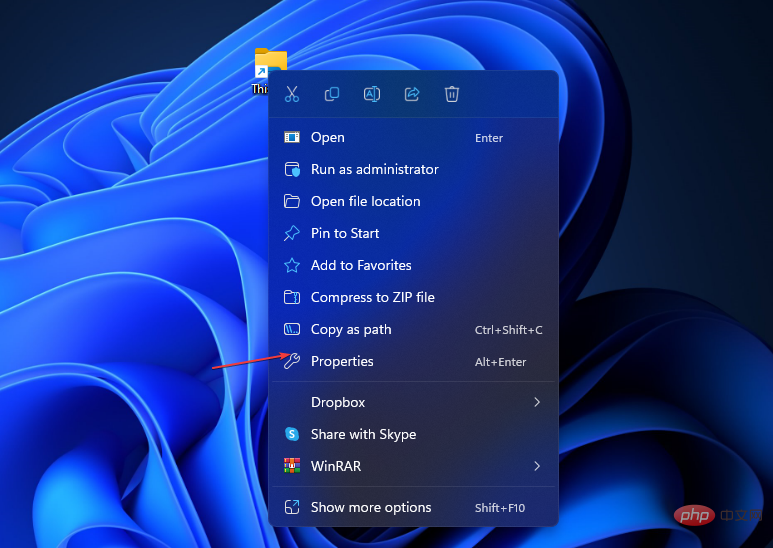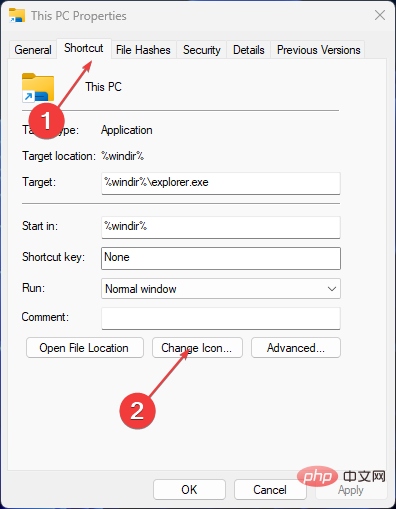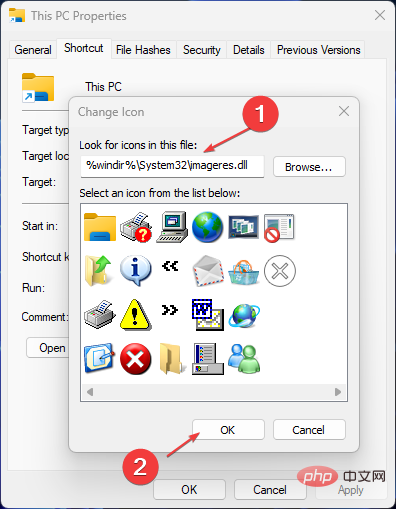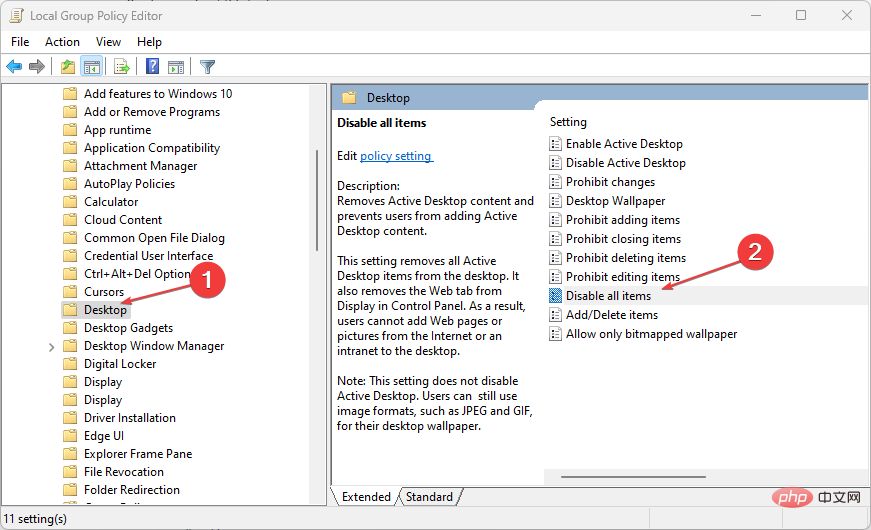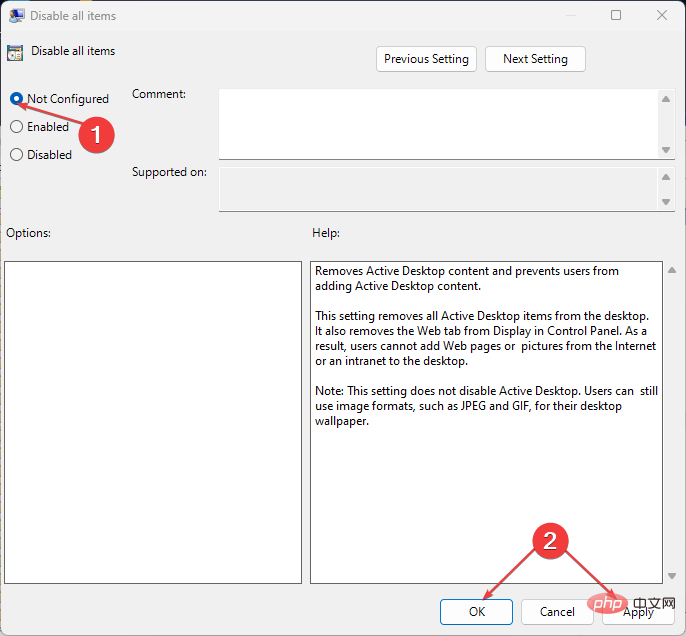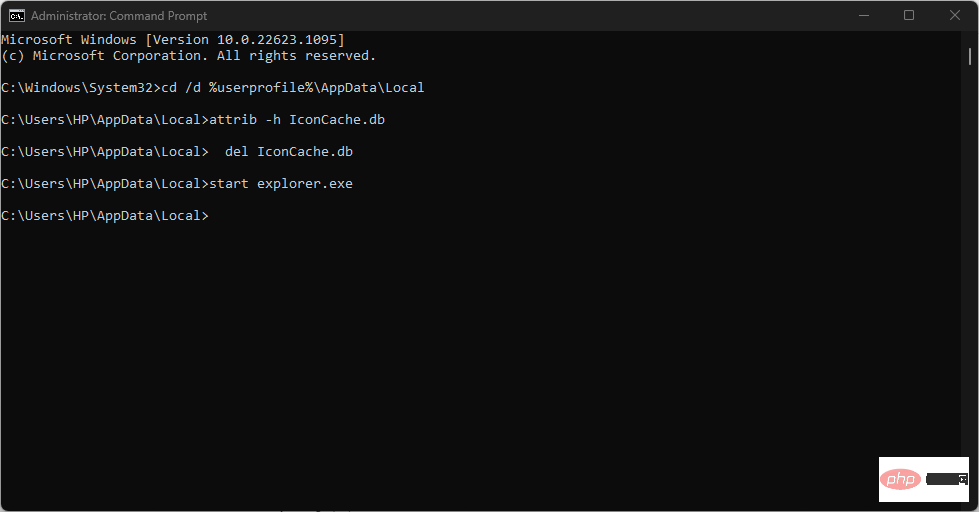Show My PC on the desktop in Windows 11: A quick guide
After you add app icons, files, and folders to the desktop, they are available on the first screen of your computer. It facilitates productive use and easy access to items. Therefore, you can display My Computer on your desktop alongside other programs.
Why doesn’t my computer display desktop icons?
Computer not showing desktop icons can happen due to many root causes. Disable the visibility of desktop icon settings. You can turn on the option to access this feature.
Other factors that may have caused my desktop icons to be missing or not displaying include:
- Show Desktop Items Disabled – To enable desktop icons on my desktop, Please right-click on the free space on your desktop, hover over the "View" option, and then check the "Show Desktop Icons" feature.
- Run in tablet mode – Enabling tablet mode on your computer may cause issues with desktop icon display. It affects the display of desktop icons and changes core display settings.
- Corrupted Icon Cache – Corrupted desktop icons on Windows will prevent them from working or displaying on your computer. It corrupts the Windows canvas for rendering icons and blocks their processing.
- Error-Related Issues and Corrupted System Files – Errors from outdated operating systems may cause desktop icons to not display. Additionally, corrupted system files in your computer may infect its display properties.
The above factors can be resolved by troubleshooting your PC and applying the following solutions.
How do I show my computer on the desktop in Windows 11?
1. Personalize Desktop Menu
- Right-click on the desktop and select Personalize from the drop-down list.

- Go to the Themes tab in the left pane. Under Related Settings, click Desktop Icon Settings.

- Check the computer box on the next page. Uncheck Allow themes to change desktop icons. It prevents built-in system themes from hiding desktop icons.

- Click the "Apply" button and "OK" to make this change to your PC.
Setting personalized icons in the desktop menu allows you to create icons from File Explorer.
2. Create a shortcut on the desktop
- Press the key prompt to display the desktop menu. WindowsD
- Right-click on your desktop, select New from the drop-down menu, then click on the submenu from the drop-down menu shortcut options.

- Type %windir%\explorer.exe in the text bar and click the Next button.

- Enter This PC as the name and click the "Finish" button to complete the shortcut creation.

- Right-click Shortcut and select Properties from the drop-down list.

- Go to the Shortcuts tab and click the Change Icon... button.

- Enter the following path in the text bar and click the "OK" button:
<strong>%windir%\System32\imageres.dll</strong>
- Find This PC icon in the list, click it, and then click the "OK" button.
- Click "Apply" and then click "OK" to create the shortcut in your desktop.
Creating a shortcut for This PC will display it on your desktop and create a quick access icon where you can easily browse This PC files.
Expert Tip:
Some PC problems are difficult to solve, especially when they involve corrupted repositories or missing Windows files. If you are having trouble fixing errors, your system may be partially corrupted.
We recommend installing Restoro, a tool that will scan your machine and determine what the fault is.
Click here to download and start repairing.
If you’re having trouble using shortcuts, check out our guide to fix My desktop shortcuts aren’t working on Windows 11.
3. Display My Computer on the desktop through the Group Policy Editor
- Press to open the "Run" dialog box, type gpedit.msc, and then click "OK" Start the Local Group Policy Editor. WindowsR
- Expand the "User Configuration" folder, and then expand the folder "Administrative Templates".
- Expand the Desktop folder and double-click the Desktop subfolder.

- In the right pane, click Disable all items.
- Check the Not Configured radio button, click the Apply button, and then click OK.

The above steps will configure your system to display icons on the desktop.
4. Rebuild this PC icon cache
- Left-click the "Start" button, type command prompt, and then click " to Run as administrator".
- Click "Yes" on the "User Account Control" prompt.
- Type the following commands, pressing after each: Enter
-
##taskkill /F /IM explorer.exe<strong>cd / d %userprofile%\AppData\Local<br>attrib –h IconCache.db<br>del IconCache.db<br>start explorer.exe<br></strong>
-
- Rebuilding this PC's cache will reconstruct the icon's cache and properties to help it appear on My Desktop. It fixes any interruptions that may have caused it to not display.
So, that’s how to put this PC on your desktop in Windows 11. The above solutions will also help you to display the My Computer icon on the desktop on Windows 10, but make sure that the “Show desktop icons” option is enabled.
However, you may encounter the issue of desktop icons being too large and taking up space unnecessarily in Windows 11.
Also, we have a detailed guide to fix flickering desktop icons on Windows 11. Additionally, our readers may be interested in our article on how to restore old desktop icons on Windows 11.
The above is the detailed content of Show My PC on the desktop in Windows 11: A quick guide. For more information, please follow other related articles on the PHP Chinese website!

Hot AI Tools

Undresser.AI Undress
AI-powered app for creating realistic nude photos

AI Clothes Remover
Online AI tool for removing clothes from photos.

Undress AI Tool
Undress images for free

Clothoff.io
AI clothes remover

AI Hentai Generator
Generate AI Hentai for free.

Hot Article

Hot Tools

Notepad++7.3.1
Easy-to-use and free code editor

SublimeText3 Chinese version
Chinese version, very easy to use

Zend Studio 13.0.1
Powerful PHP integrated development environment

Dreamweaver CS6
Visual web development tools

SublimeText3 Mac version
God-level code editing software (SublimeText3)

Hot Topics
 How to fine-tune deepseek locally
Feb 19, 2025 pm 05:21 PM
How to fine-tune deepseek locally
Feb 19, 2025 pm 05:21 PM
Local fine-tuning of DeepSeek class models faces the challenge of insufficient computing resources and expertise. To address these challenges, the following strategies can be adopted: Model quantization: convert model parameters into low-precision integers, reducing memory footprint. Use smaller models: Select a pretrained model with smaller parameters for easier local fine-tuning. Data selection and preprocessing: Select high-quality data and perform appropriate preprocessing to avoid poor data quality affecting model effectiveness. Batch training: For large data sets, load data in batches for training to avoid memory overflow. Acceleration with GPU: Use independent graphics cards to accelerate the training process and shorten the training time.
 deepseek image generation tutorial
Feb 19, 2025 pm 04:15 PM
deepseek image generation tutorial
Feb 19, 2025 pm 04:15 PM
DeepSeek: A powerful AI image generation tool! DeepSeek itself is not an image generation tool, but its powerful core technology provides underlying support for many AI painting tools. Want to know how to use DeepSeek to generate images indirectly? Please continue reading! Generate images with DeepSeek-based AI tools: The following steps will guide you to use these tools: Launch the AI Painting Tool: Search and open a DeepSeek-based AI Painting Tool (for example, search "Simple AI"). Select the drawing mode: select "AI Drawing" or similar function, and select the image type according to your needs, such as "Anime Avatar", "Landscape"
 Pi Node Teaching: What is a Pi Node? How to install and set up Pi Node?
Mar 05, 2025 pm 05:57 PM
Pi Node Teaching: What is a Pi Node? How to install and set up Pi Node?
Mar 05, 2025 pm 05:57 PM
Detailed explanation and installation guide for PiNetwork nodes This article will introduce the PiNetwork ecosystem in detail - Pi nodes, a key role in the PiNetwork ecosystem, and provide complete steps for installation and configuration. After the launch of the PiNetwork blockchain test network, Pi nodes have become an important part of many pioneers actively participating in the testing, preparing for the upcoming main network release. If you don’t know PiNetwork yet, please refer to what is Picoin? What is the price for listing? Pi usage, mining and security analysis. What is PiNetwork? The PiNetwork project started in 2019 and owns its exclusive cryptocurrency Pi Coin. The project aims to create a one that everyone can participate
 How to ask deepseek
Feb 19, 2025 pm 04:39 PM
How to ask deepseek
Feb 19, 2025 pm 04:39 PM
The search accuracy of DeepSeek depends on the way of asking questions. To achieve ideal results, the question should contain the following key elements: Clear topic: Specific specified information objectives. Specific angles: Cut into the topic from a specific perspective. Expected output form: define the desired result type (summary, analysis, list, etc.).
 How to download deepseek
Feb 19, 2025 pm 05:45 PM
How to download deepseek
Feb 19, 2025 pm 05:45 PM
Make sure to access official website downloads and carefully check the domain name and website design. After downloading, scan the file. Read the protocol during installation and avoid the system disk when installing. Test the function and contact customer service to solve the problem. Update the version regularly to ensure the security and stability of the software.
 How to use deepseek
Feb 19, 2025 pm 04:45 PM
How to use deepseek
Feb 19, 2025 pm 04:45 PM
DeepSeek is an efficient data search and analysis tool with an indexing mechanism at its core. Factors that affect their efficiency include: data type, data size, search strategy, and DeepSeek performance. High-quality data, refined search queries and sufficient computing resources are essential to optimize search results.
 How to adjust Sesame Open Exchange into Chinese
Mar 04, 2025 pm 11:51 PM
How to adjust Sesame Open Exchange into Chinese
Mar 04, 2025 pm 11:51 PM
How to adjust Sesame Open Exchange to Chinese? This tutorial covers detailed steps on computers and Android mobile phones, from preliminary preparation to operational processes, and then to solving common problems, helping you easily switch the Sesame Open Exchange interface to Chinese and quickly get started with the trading platform.
 Ouyi Exchange Download Official Portal
Feb 21, 2025 pm 07:51 PM
Ouyi Exchange Download Official Portal
Feb 21, 2025 pm 07:51 PM
Ouyi, also known as OKX, is a world-leading cryptocurrency trading platform. The article provides a download portal for Ouyi's official installation package, which facilitates users to install Ouyi client on different devices. This installation package supports Windows, Mac, Android and iOS systems. Users can choose the corresponding version to download according to their device type. After the installation is completed, users can register or log in to the Ouyi account, start trading cryptocurrencies and enjoy other services provided by the platform.



